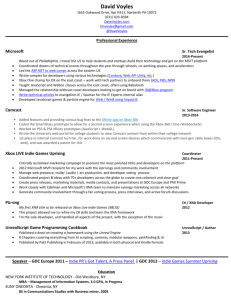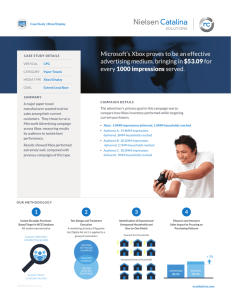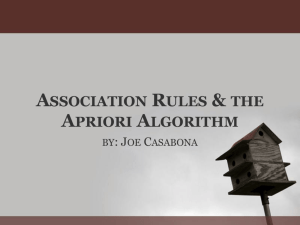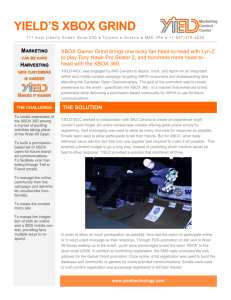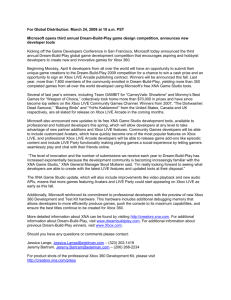International Operations Management
advertisement
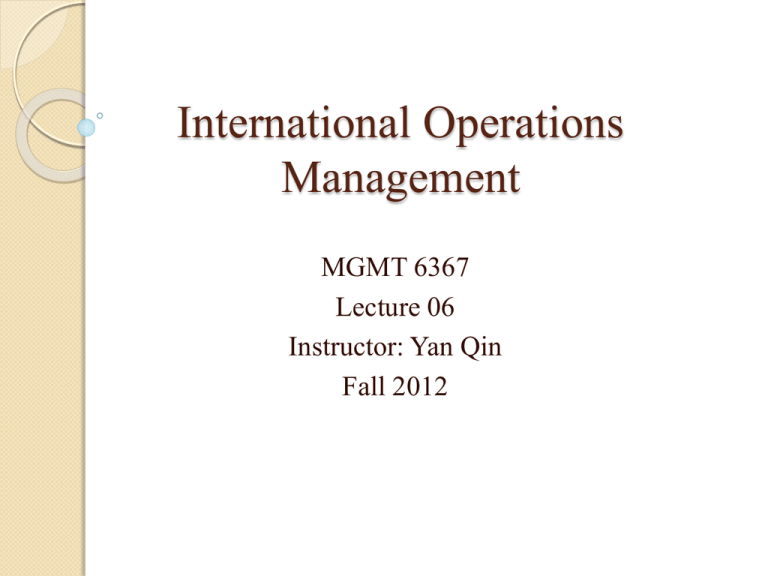
International Operations Management MGMT 6367 Lecture 06 Instructor: Yan Qin Fall 2012 Outline Review for Mid-term Exam Case study ◦ Case: New Balance ◦ Case: Xbox ◦ Case: Mattel Review for Mid-term Exam Additional office hours: ◦ 7:00 pm – 8:00 pm, Oct 11 CST ◦ 7:00 pm – 8:00 pm, Oct 13 CST Mid-term Exam: 2 hours, open book/slides, in class Only Multiple-choice questions will be given on the exam. ◦ There will be 30 multiple-choice questions on the exam. Each is worth 4 points. Anything that is not listed on the review slides will not be tested. No case-related questions will be asked on the exam. What you should know – Week 1 Definitions of Production, Operations, and Operations Management Four competitive priorities Definitions of qualifying/winning criteria What is Logistics Global Vs. Domestic Operations and Logistics Differences between goods and services What you should know – Week 3 Definitions of Outsourcing, Off-shoring, Back-sourcing, and Near-shoring Why outsourcing Four types of components classified based on the SIC matrix ◦ Outsource/in-house recommendations for each type of component What are the 5 typical buyer-supplier relationships ◦ Pros and Cons of each type of relationship Products suitable for global outsourcing Risks of outsourcing What you should know – Week 3 Calculation:You should know how to ◦ Use the method of Factor Rating to find the supplier with the highest/lowest overall rating; ◦ Solve for the break-even quantity ◦ Give make-or-buy suggestions based on the relative magnitude of break-even quantity and the expected production quantity What you should know – Week 4 Definitions of Supply Chain Management What is Bull-whip effect? ◦ Major causes and possible remedies What is risk? Four types of risks in a Supply Chain Possible risk management strategies Common types of qualitative and quantitative forecasting methods What you should know – Week 4 Calculation:You should know how to ◦ Compute Inventory Turnover and Weeks of Supply based on the information given. ◦ Compute the significance of a risk event ◦ Use moving average methods and exponential smoothing method to make required forecasts What you should know – Week 5 Definitions of customer value, value-added activities, nonvalue-added activities, and waste Ohno’s seven wastes Expectations in a Lean Supply Chain What is Group Technology ◦ Benefits offered by the use of Group Technology Pros and Cons of small transfer batches Definition of setup time Differences between internal and external setup steps What you should know – Week 6 Key in storage design Common types of storage systems Inputs to the layout decision for production facilities Four basic production layouts ◦ Description of each layout ◦ Suitable products for each layout Calculation:You should know how to ◦ Compute the material handling costs for a process layout. Pay attention to the example given on Process Layout Design; ◦ Compute the required workstation cycle time, the theoretical minimum number of workstations, and efficiency in assembly-line balancing. Case study Sample answers to the case-related questions can be found in the PDF document titled “Case Study – Sample Answers” posted on the course website. Please note that the sample answers may not be 100% correct or the only solutions. Case Study: New Balance Please read the case “New Balance Athletic Shoe, Inc.” and think about the following questions: What are the competitive implications of the Adidas/Reebok transaction for New Balance? You may want to refer to figures in Exhibit 2. In what aspects did New Balance see itself differentiated from Nike, Adidas, or Reebok? New Balance placed a disproportionately large emphasis (relative to sales generated) on serving smaller retailers and ensuring timely delivery of products to them. What are the reasons for them to do that? New Balance – Cont. New balance performed 25% of its manufacturing in the United states at a time when nearly all of its competitors were manufacturing 100% of their products in Asia. What are the primary reasons for them to maintain domestic manufacturing? Suppose the total US volume of athletic shoes per year is 400 million pairs. How much is the cost penalty resulted from New Balance’s domestic manufacturing? Case study: X-Box Read the case on X-box and think about the following questions: What were the challenges facing Microsoft with the original Xbox? What supply chain changes did Microsoft make between Xbox and the Xbox 360? And what’s the motivation? What are the benefits and risks of the global launch planned for the Xbox 360? Microsoft planned to use three EMS firms for the Xbox 360, all manufacturing in China. What were the benefits and limitations of the approach? Case study: and the toy recalls (A) This case details the events leading up to the recalls at MATTEL in 2007 and highlights the difficulties a multi-national company faces in managing global operations. Please read the case carefully and think about the following questions: What are the characteristics of the toy industry and how do they affect toy production? Two quality problems were mentioned in the case: lead paint and small magnets. What were the causes of these problems? What challenges do toy companies face in managing offshore- outsourcing? Good luck on the exam! Just let me know if you have any questions!

